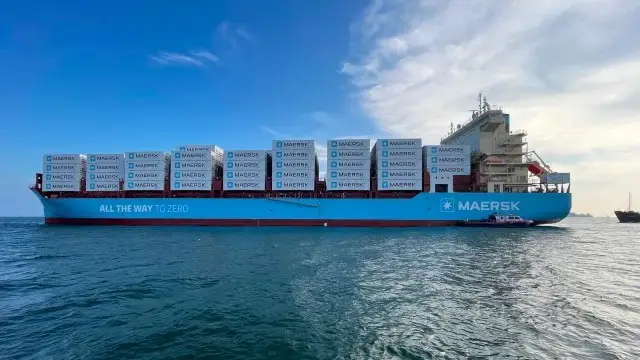
The Ministry of the Environment and Natural Resources (Semarnat) has conditionally authorized the construction of the Punta Colonet Port in Baja California, a project that requires more than 24 billion pesos of investment for its construction.
“This General Directorate of Environmental Impact and Risk in the exercise of its powers, has resolved to conditionally authorize (the environmental impact statement) of the Punta Colonet Port promoted by the Integrated Port Administration of the State of Baja California, to be located in Ensenada,” reveals documentation in possession of Forbes Mexico.
The authorization from Semarnat will be valid for 7 years 11 months to carry out the site preparation and construction activities of the Punta Colonet Port, as well as 46 years for operation and maintenance.
“The resolution does not exempt the Baja California government from processing and obtaining the corresponding authorization for the change of land use in forest lands before the General Directorate of Forest Management, Soils and Ecological Ordering of Semarnat,” says the department in charge of María Luisa Albores González.
The Baja California government revived the Punta Colonet Port in response to the arrival of investors from Asia who are looking to install semiconductor plants, medical instruments and auto parts in Mexico. Such a phenomenon, known as nearshore.
According to the documents of the government headed by Marina del Pilar Ávila Olmeda, the money for the construction of the Punta Colonet port infrastructure will be financed entirely with private resources or recoverable financing sources.
The Punta Colonet port has the potential to become one of the Intermodal Logistics Platforms with the greatest growth expectations on the West Coast of North America, explains the project.
Punta Colonet is located in the municipality of Ensenada on the Mexican Pacific coast. It has a total area of 2,769 hectares, made up of 83 hectares of public domain and 2,686 hectares of territorial sea water.
The new port terminal has the possibilities for the reception of large vessels, such as the recent NeoPanamax container ships and the opening of new ports of call on transpacific shipping routes, with competitive costs compared to the current offer of ports, the Baja California government points out in the documentation.
Now the Baja California government is required to carry out 28 mitigation and compensation measures for the environmental impact of the Punta Colonet Port.
Among the actions required by Semarnat are the delivery of Hydrological and Hydraulic Studies, the update of the Hydrodynamics and Coastal Transport Studies, a Program for the control and monitoring of water and sediment quality, as well as a Program of actions for the control of sediments during the execution of the Dredging.
Semarnat asked the Baja California government to deliver a Program to scare away, rescue, relocate and monitor terrestrial fauna, a Compensation Program for environmental services, as well as a Contingency and Emergency Response Plan and a Noise Control and Reduction Program.
The promoters of the Punta Colonet Port must have a Program for the control and mitigation of light pollution in the Port, a Comprehensive Waste Management Program, a Preventive and Corrective Maintenance Program for machinery, equipment and vehicles to avoid spills and leaks of hydrocarbons into the water, a Program for Environmental Dissemination and Education and a Comprehensive Program for the control of the Water and Carbon Footprint.
“As a compensation measure for the execution of the project, and with the aim of protecting the ecosystems present in the area known as Mesa de Colonet, the developer must submit within a period of three months prior to the start of the works and activities of the project, a Proposal for the creation of a State Protected Natural Area within the Mesa de Colonet,” it concludes.
Source: forbes




